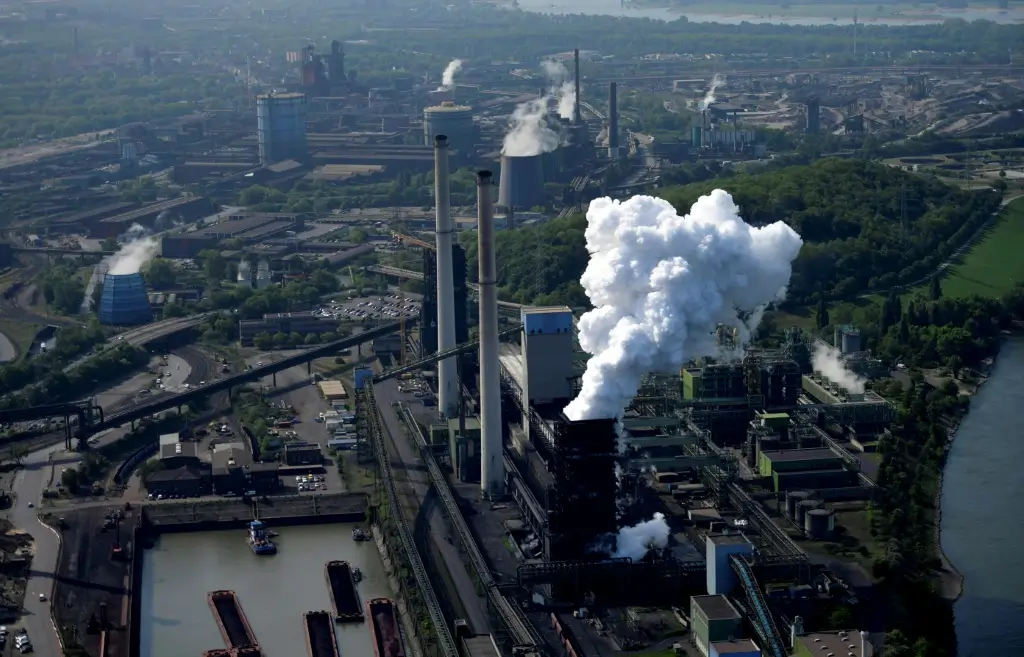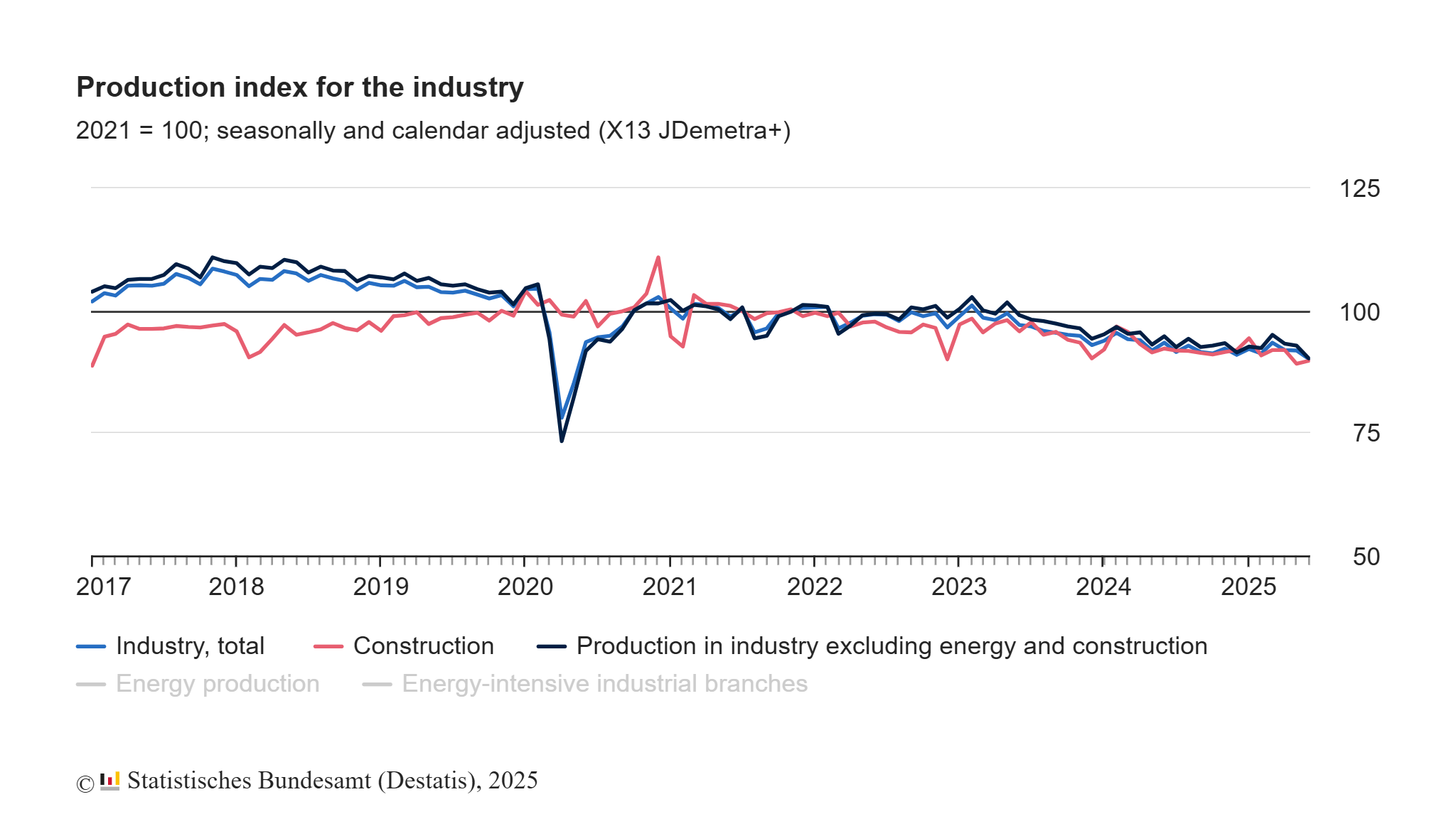
German industrial production slumped to its lowest level in June since the pandemic in 2020, data showed Thursday, underlining the fragility of Europe's top economy even before higher US tariffs kicked in. Factory output in June fell 1.9 percent month-on-month, federal statistics agency Destatis said, steeper than a drop of 0.5 percent forecast by analysts polled by financial data firm FactSet.
June 2025 (in real terms, provisional):
-1.9% on the previous month (seasonally and calendar adjusted)
-3.6% on the same month a year earlier (calendar adjusted)
May 2025 (in real terms, revised):
-0.1% on the previous month (seasonally and calendar adjusted)
-0.2% on the same month a year earlier (calendar adjusted)
There were particularly heavy falls in the manufacture of machinery and pharmaceuticals, helping to drag overall factory output down to levels last seen in May 2020 during the coronavirus pandemic. According to the Federal Statistics Office, production in mechanical engineering shrank by 5.3 percent. The pharmaceutical industry recorded a decline of 11.0 percent, and the food industry a decline of 6.3 percent. Energy production, on the other hand, saw a positive increase of 3.1 percent.

Destatis also made a major revision to May industrial production data, saying the indicator fell 0.1 percent. It had previously reported a healthy rise of 1.2 percent. The Federal Ministry of Economics cited a “counter-movement to the pull-forward effects” of the announced US tariff increases as one of the reasons for the decline in production.
At the beginning of the year, companies had brought forward orders to replenish their stocks before the tariffs announced by US President Donald Trump came into effect. In light of deteriorating conditions due to tariffs and subdued demand from countries outside the eurozone, “there are currently no signs of a lasting upturn in industrial activity,” the Federal Ministry of Economics added.
Jupp Zenzen, economic expert at the German Chamber of Industry and Commerce (DIHK), expressed a similarly gloomy view. “The downward trend continues unabated,” he said. “Given the weak order intake, there is no reason to hope that the industry will soon emerge from the slump after two years of recession.” He cited bureaucracy, high location costs, and lengthy approval processes as “brakes on growth,” adding that companies were also feeling the effects of US trade policy.
ING bank analyst Carsten Brzeski said the dire data could prompt a downward revision to an initial estimate showing the economy shrank slightly in the second quarter. "This is bad news," he said. "At face value, industry remains stuck in a very long bottoming out." A series of bright data releases since the start of the year had raised hopes that the worst might be over for Germany's economy.
The eurozone's traditional export powerhouse shrank for the past two years, battered by high energy costs and fierce Chinese competition, and now faces a massive extra hit from Trump's tariff blitz. A new baseline US levy of 15 percent on European Union exports took effect Thursday, with the EU among dozens of US trading partners facing higher tariffs.
"It looks highly unlikely that exports could soon again be a significant growth driver for the German economy," Brzeski said. "The new tariffs will clearly weigh on economic growth." Data released Thursday also showed that German exports in June to the United States, the country's biggest trading partner, fell 2.1 percent, after having registered a steep decline in May.
Overall exports in June rose 0.8 percent month-on-month however, Destatis said, more than the 0.5-percent increase expected in a FactSet poll of analysts.